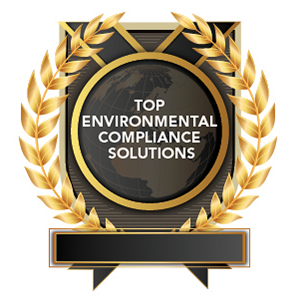Harnessing Carbon Credits for a Sustainable and Equitable Future
Tuesday, October 28, 2025
Developing carbon credit projects has become a critical component of the global effort to combat climate change and transition to a low-carbon future. As governments, industries, and organizations work to reduce their carbon footprints, the demand for scalable, verifiable emissions reduction solutions continues to grow. Carbon credit projects offer a structured, science-based pathway for meaningful action in environmental sustainability. By design, they align with regulatory requirements and ethical responsibilities, while increasingly emphasizing innovation, inclusivity, and accountability to all stakeholders.
Translating Emission Reductions into Measurable Impact
At the core of carbon credit project development lies a systematic approach aimed at capturing, reducing, and/or avoiding greenhouse gas emissions in independently verifiable and quantifiable ways. Such projects can take various forms, including forest conservation, establishing renewable energy facilities, reforestation efforts, methane capture, and enhancing agricultural practices. The primary objective is to achieve measurable reductions in emissions that can subsequently be converted into tradable carbon credits, with each credit representing the reduction or avoidance of one metric ton of carbon dioxide or its equivalent in atmospheric release.
Developing a carbon credit project involves a complex process that necessitates multidisciplinary expertise. The initial phase focuses on selecting the appropriate project type and its associated delegacy, taking into consideration environmental, social, and economic feasibility. The project is conceptualized during this phase, and relevant methodologies are integrated into a recognized voluntary carbon standard. These standards delineate the protocols for validation, monitoring, and credit issuance, ensuring that the carbon credits generated are real, additional, permanent, and subject to independent verification. Following validation, the carbon project design documents and baseline assessments are utilized as impact modeling maps, contributing to the process's credibility and transparency.
A distinguishing characteristic of carbon credit development is its support for emissions reduction, which facilitates the creation of alternative economic activities. For instance, communities engaged in reforestation or promoting clean energy often experience enhanced employment opportunities, skills training, and infrastructure improvements. This interrelationship between environmental benefits and socio-economic development is why carbon credits are increasingly recognized as solutions that transcend mere market mechanisms.
The Path of Integrity through Great Oversight
Integrity is the slipstream of any carbon credit project. For these initiatives to benefit, they must withstand public and scientific scrutiny. Independent third parties undertake verification, assessing whether emissions reductions claimed are authentic according to established methodologies. This builds trust with buyers and regulators while guaranteeing that environmental objectives were not compromised, thus confirming the integrity of project development.
Project developers must consider environmental accuracy and legal, technical, and financial issues. These factors include land tenure, stakeholder engagement, and risk assessment, which directly affect project viability. For instance, the forest preservation project must show that the land in question would have been subject to deforestation without intervention by this project. Hence, this form of "additionality" aims to show the project's real impact. Equally, permanence addresses the durability of carbon benefits, protecting reforested areas for decades and optimizing the chances of reversal due to natural or human causes.
A growing emphasis within the industry is placed on co-benefits—unforeseen outcomes, other than carbon. It is now assumed that successful projects will also conserve biodiversity, improve water quality, and enhance livelihoods. High-integrity carbon credit development involves strong consultation with stakeholders and periodic reassessment to ensure fidelity to environmental prescriptions and the local community's needs.
Climate Finance and Global Partnership
The high craving for carbon credits exemplifies the necessity for mobilizing climate finance at a massive global scale. Many interfaces, especially those in hard-to-decarbonize sectors, look for carbon credits to complement their internal reduction work. This demand, in turn, creates avenues for innovation in credit development, financing, and trading. The voluntary and compliant carbon market is crucial in bringing funds to support projects without the means of involvement.
For the developing world, the development of carbon credit projects acts as a potent gateway to sustainable development. By monetizing emissions reductions, these projects open windows of opportunity for funding climate resilience and green infrastructures. Carbon projects are not only an issue of environmental accountability but also an issue of economic empowerment. Well-designed and implemented carbon projects help anchor the connection between local sustainability action and global emissions targets.
Technology will also pave the way out of this field. Satellite monitoring, blockchain certification, and data analytics have brought more exactness and accountability. These innovations must stretch the limits, assuring the carbon market's development alongside the necessity of transparency, equity, and large-scale impact.
Carbon credit project development services are more than mere technical pathways to emissions reductions; they catalyze environmental restoration, economic inclusion, and global cooperation. These services offer the world the tools, frameworks, and partnerships needed as they rally around the goal of net zero to turn aspiration into action. By investing in carbon projects, we do not merely offset emissions; we invest in a cleaner, more resilient future for all.














